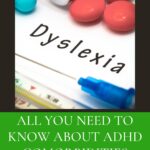We are starting a series of articles today on the site, with a bit of a personal tale attached. Our editor is 49, and on an ADHD diagnosis journey. Self awareness through a counselling course led her to discover more about herself, including the likelihood of ADHD. It takes years to diagnose as an adult, so that journey continues. We have Sarah Templeton guest posting today to shed some light on ADHD, and help to improve understanding of symptoms, comorbidity, and simply to shine a light on this area of neurodiversity. Her counselling agency, Headstuff ADHD Therapy, supports many with ADHD, and her book, How NOT to Murder your ADHD Kid: Instead Learn How To Be Your Child’s Own ADHD Coach is well worth the money. It is eye-opening, both in terms of supporting ADHD children, and helping to clarify how their brains work. Today we are looking at ADHD comorbidities to help understand what other things it might be worth looking out for if you do have that ADHD diagnosis, either in yourself or your children.


Any ADHD specialist paediatrician or psychiatrist will tell you that:
‘ADHD is a big umbrella and a lot comes under it’.
Sarah Templeton, Headstuff ADHD Therapy
What they mean by this is it’s extremely rare for somebody to be diagnosed with ADHD alone. 80% of people with an ADHD diagnosis have at least one comorbidity or ‘coexisting condition’. 50% of people with ADHD have at least two of these. So having an awareness of what an ADHD child might also be dealing with is hugely helpful.
ADHD comorbidity: The big four D’s
The first ones to look out for are what I call the Big Four D’s. Dyslexia, dyscalculia, dyspraxia and dysgraphia.
Dyslexia is probably the easiest one to spot. These children might struggle with spelling, punctuation, sentence construction, letters jumping around the page, and anything to do with words. So dyslexia is often spotted, but the problem is that once diagnosed, all the child’s struggles will be assumed to be connected to dyslexia. I have yet to meet one person diagnosed with dyslexia who doesn’t also have ADHD so it’s definitely worth digging to see if there’s more going on.
Dyscalculia is the numbers version of dyslexia. These children will struggle with different elements of maths. They might be good at some elements and not others. A lot of children with dyscalculia struggle to tell the time on an analog clock. They get bamboozled when there are a lot of numbers bunched up together so for example, a mobile telephone number written down without any spaces. They also struggle to do routines at ballet classes or in PE. And they hugely struggle to work out problems. Their dyscalculia brain just does not work that way.


Dyspraxia is a co-existing condition a lot of people will have heard of. It’s new name is ‘developmental coordination disorder’. These children take clumsiness to a new level. They will often be covered in bruises, scratches, grazes and cuts. They struggle with coordination and sometimes processing as well. Children with dyspraxia will often be very heavy-handed so when writing you will be able to see the imprint three or four pages down. Parents of dyspraxic children will find themselves in A&E more than most. Their spatial awareness is often skewed, they find it difficult to look smart as doing zips and buttons up is difficult, and it’s wise to buy some very large napkins as they tend to drop food down themselves a lot.
Dysgraphia is the least well-known of these Big Four D conditions. Put simply with dysgraphia the message from the brain to the hands is corrupted. So children with dysgraphia will often have all the answers in their head but find it impossible to write what they know down. So even giving them a laptop, computer or an Ipad to write their answers down isn’t going to help.
Sensory processing disorder
Then we move on to the slightly lesser known coexisting conditions. The biggest of which has to be sensory processing disorder. In Sarah’s view, around 8 or 9 out of 10 ADHD children also have sensory processing disorder.
This can affect all the senses. It is different in each ADHD child as well.
Some will be affected by smell, taste, touch, texture, noise and the amount SPD can impact their life goes from the mild to the very severe. I’ve counselled many children who will only wear soft material next to their skin. A lot won’t wear jeans and will only wear leggings. They don’t like the jeans tight/hard waistband mostly. The vast majority of children with SPD don’t like anything itchy, scratchy, woolly or anything that clings to the neck like a polo neck. That can make them feel like they are choking. They tend to prefer wearing jersey, cotton and denim because it doesn’t itch. They will also hate labels in clothes and like to take them out.


Social anxiety
Another very common ADHD comorbidity, which seems to relate much more to boys than girls is social anxiety. Children with this condition usually hate crowds and anywhere where there are large numbers of people. They usually don’t like shopping centres, concerts, football stadiums, public transport and anywhere they will become overwhelmed by being surrounded by too many people.
This can be crippling for children and because they won’t be able to explain their feelings, they will usually react with some sort of anger or meltdown when being put into a situation where their social anxiety impacts.
Irritable Bowel Syndrome
Another very common coexisting condition of ADHD is irritable bowel syndrome, also known as IBS (which interestingly, the editor of this website has).
Many ADHD babies and young children will have different toilet habits to their peers. They may go to the toilet a lot more often than others or conversely have serious constipation problems. A lot of parents think their children have allergies or intolerances such as wheat or lactose, when in actual fact the problem is nearly always undiagnosed IBS.


Ehlers Danlos Syndrome
Another condition sometimes linked to ADHD is Ehlers Danlos Syndrome known as EDS. Again, this condition can range from the very mild to severe. Children with it mildly will have scars that don’t heal neatly. They will be left with a splayed scar instead. They will always have hypermobility which is linked to EDS, so might be very proud of being able to bend their hand back till it touches their arm, but this can also be an indicator of ADHD.
EDS affects the skin on the outside, as well as the skin inside, so it’s not unusual for children to get painful fissures.
Chronic fatigue and fibromyalgia
Another two conditions connected to ADHD are chronic fatigue and fibromyalgia. These don’t usually show up until early teens and there is much research going on, but it is definitely accepted now that there is a link between ADHD and these two conditions.
Alexithymia and Dyslexithymia
Alexithymia and Dyslexithymia are another two coexisting conditions. The first where you struggle to have any feelings and emotions, and the second when you struggle to describe feelings and emotions. These are rare, but when present can be crippling.
Remember, KiddyCharts is not a medical site, we are here to provide information and not diagnoses, so do visit your doctor / GP for more information if you are concerned about anything. We are not here to cause health anxiety, more to support those with ADHD in understanding that they are not alone. They have places to go for support, and people that case about them, and want to support.
If you want more information on ADHD and ADHD Comorbidity, do check out Sarah Templeton’s books. In addition to the How NOT to murder your ADHD Child, there is an additional book for helping teachers too called How not to kill the spirit in your ADHD kids: Instead understand their brains and turbo charge our future leaders and winners.
If you have time, check them out regardless of your own personal journeys. It helps everyone for us all to understand and accept the differences in human brains universally.
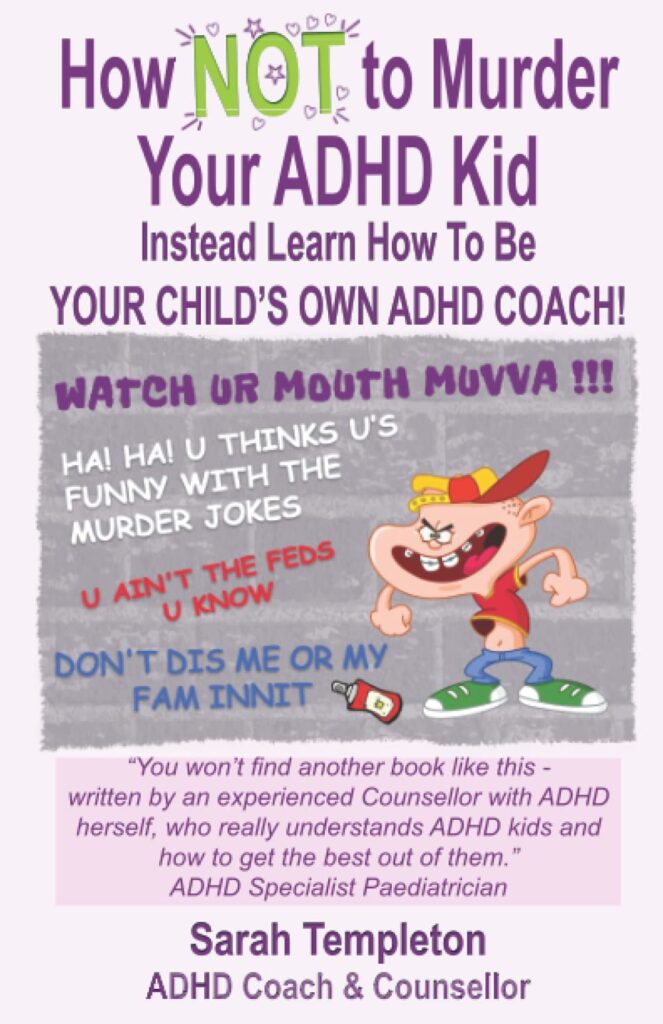
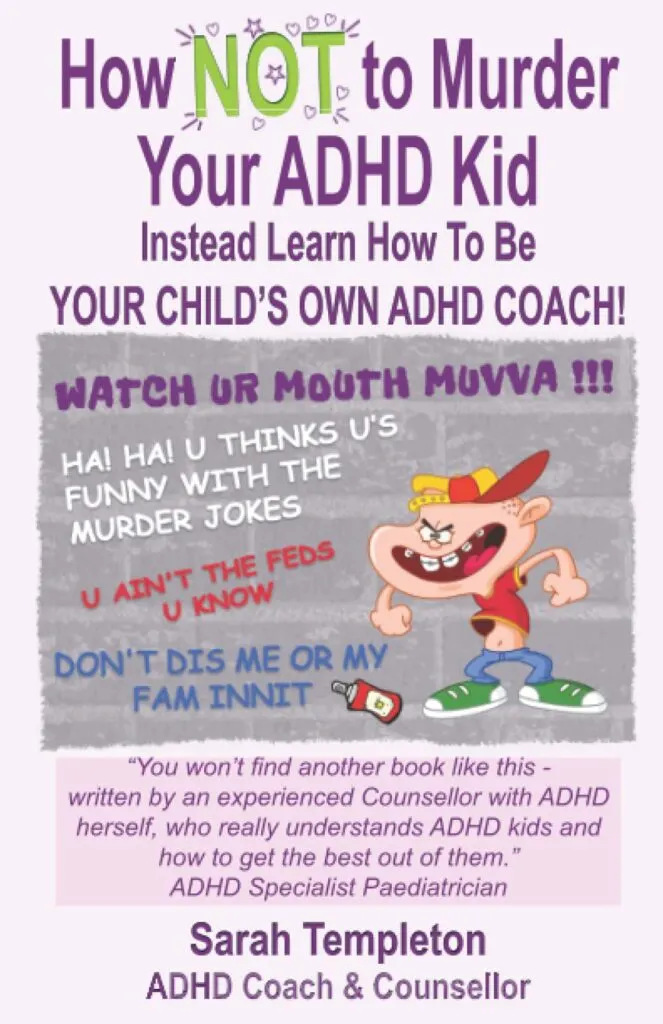
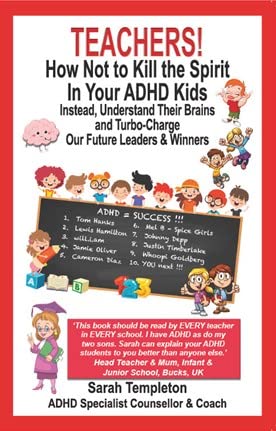
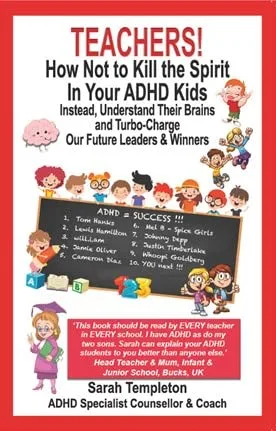
If you are interested in any of our other special needs / neurodiversity articles, do check these out:
Other articles on KiddyCharts relevant to Special Needs
Here are some articles and resources that are helpful to those caring for children with special needs.
How to explain autism to children #31DaysOfLearning
How to explain what autism is to children.
OCD and autism: Understanding the difference in children
Understanding the differences between OCD and Autism.
10 things for parents of special needs children to do when they are stuck indoors
Help to come up with activities if you are stuck indoors with your child.
Parenting a Special Needs Child: 5 top tips
Some top tips from a parent of a child with special needs on how to cope.
Here are more articles for parents from offsite too:
Other resources from the internet focused on support in Special Needs
Here are some more ideas for supporting children with Special Needs.
12 Activities to Promote Eye Contact
Encouraging eye contact is a great way to assist with promoting improvements in social skills.
5 Clean Science Experiments for Autistic Children
Sometimes children with autism don't like getting too messy - so here is some science fun for them!
48 Quick Sensory Bags to Make for Your Kids
Sensory play is excellent for supporting children with special needs, so here are loads of different ideas for you.
As always, if you like us, sign up to our newsletter!
Thanks again for visiting.
Helen



